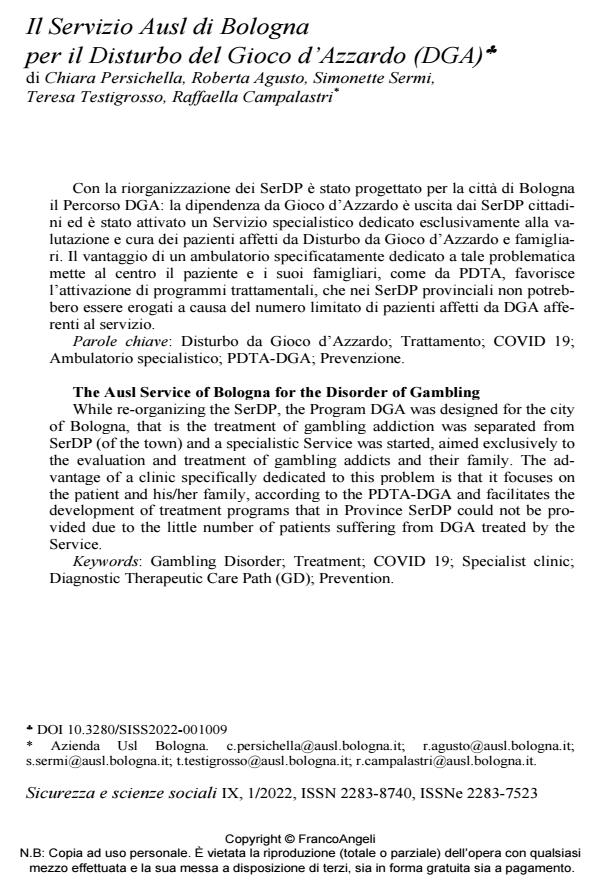The Ausl Service of Bologna for the Disorder of Gambling
Journal title SICUREZZA E SCIENZE SOCIALI
Author/s Chiara Persichella, Roberta Agusto, Simonette Sermi, Teresa Testigrosso, Raffaella Campalastri
Publishing Year 2022 Issue 2022/1
Language Italian Pages 11 P. 107-117 File size 218 KB
DOI 10.3280/SISS2022-001009
DOI is like a bar code for intellectual property: to have more infomation
click here
Below, you can see the article first page
If you want to buy this article in PDF format, you can do it, following the instructions to buy download credits

FrancoAngeli is member of Publishers International Linking Association, Inc (PILA), a not-for-profit association which run the CrossRef service enabling links to and from online scholarly content.
While re-organizing the SerDP, the Program DGA was designed for the city of Bologna, that is the treatment of gambling addiction was separated from SerDP (of the town) and a specialistic Service was started, aimed exclusively to the evaluation and treatment of gambling addicts and their family. The ad-vantage of a clinic specifically dedicated to this problem is that it focuses on the patient and his/her family, according to the PDTA-DGA and facilitates the development of treatment programs that in Province SerDP could not be pro-vided due to the little number of patients suffering from DGA treated by the Service.
Keywords: Gambling Disorder; Treatment; COVID 19; Specialist clinic; Di-agnostic Therapeutic Care Path (GD); Prevention.
Chiara Persichella, Roberta Agusto, Simonette Sermi, Teresa Testigrosso, Raffaella Campalastri, Il Servizio Ausl di Bologna per il Disturbo del Gioco d’Azzardo (DGA) in "SICUREZZA E SCIENZE SOCIALI" 1/2022, pp 107-117, DOI: 10.3280/SISS2022-001009